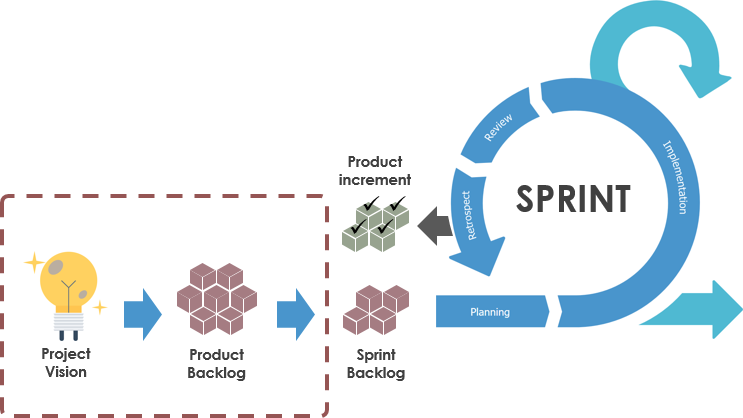Navigating Agile Project Success: The Symbiotic Dance of Vision, Backlogs, and Increments
Introduction
Embarking on a project is akin to setting sail on uncharted waters. In this dynamic journey, the project vision serves as the North Star, guiding every decision and action. Yet, the realization of this vision is not a linear path but a dance orchestrated by the interplay of the product backlog, sprint backlog, and product increment. This article delves into the intricacies of this symbiotic relationship, exploring how the project vision shapes the backlog, influences sprints, and ultimately materializes in the evolving product increment.
The Symbiotic Dance of Vision, Backlogs, and Increments
Let’s dive into the intricacies of project vision and its relationship with the various aspects of agile development, particularly the product backlog, sprint backlog, and product increment.

1. Project Vision:
- The project vision is the overarching goal or desired outcome of the project. It provides a clear direction and purpose for the entire team.
2. Product Backlog:
- The product backlog is a dynamic, prioritized list of features, enhancements, and bug fixes that need to be addressed in the product. These items are derived from the project vision.
- Each item in the backlog should contribute to the overall realization of the project vision.
3. Sprint Backlog:
- The sprint backlog is a subset of items from the product backlog that the team commits to delivering during a specific sprint.
- The selection of items for the sprint backlog is influenced by the priority assigned in the product backlog and the capacity of the team for that sprint.
4. Product Increment:
- The product increment is the sum of all completed product backlog items at the end of a sprint. It is a tangible, working version of the product.
- The increment should be a usable product, even if it doesn’t yet include all the desired features from the project vision.
Relationships:
- The project vision sets the overall direction, guiding the creation and prioritization of items in the product backlog.
- The product backlog, as a repository of all desired features, is where the project vision is translated into actionable tasks.
- During sprint planning, items are selected from the product backlog to form the sprint backlog. This selection is based on the team’s capacity and the priority of backlog items.
- The sprint backlog, therefore, represents a short-term goal aligned with the broader project vision. It’s a step towards achieving the overall project objectives.
- The product increment resulting from the sprint represents tangible progress toward the project vision. Over successive sprints, each increment builds upon the previous ones, gradually realizing the overall vision.
In essence, the project vision acts as a guiding star, influencing the content of the product backlog, which in turn informs the sprint backlog and drives the development of each product increment. This iterative and incremental approach ensures that the project evolves in alignment with its overarching vision.
Summary
At its core, the project vision is the compass that directs the team’s efforts. The product backlog, a living repository of aspirations, translates this vision into actionable tasks. As sprints unfold, the sprint backlog becomes a curated selection, aligning short-term goals with the broader vision. The culmination of each sprint, the product increment, is a tangible embodiment of progress. This iterative process ensures not only the realization of individual features but a harmonious progression toward the ultimate project vision. Join us as we unravel the nuances of this dance—where vision meets execution, and backlogs pave the way to project triumph.

